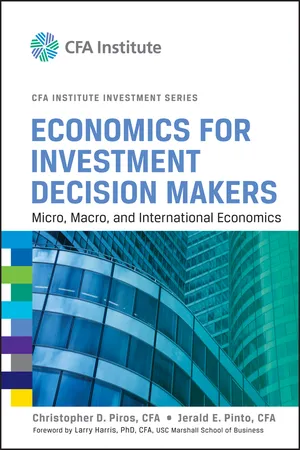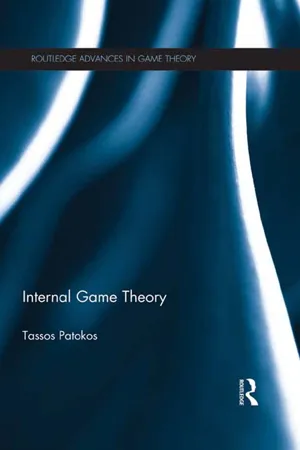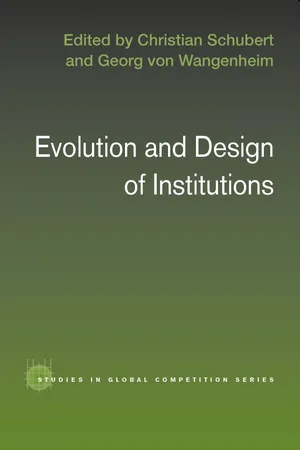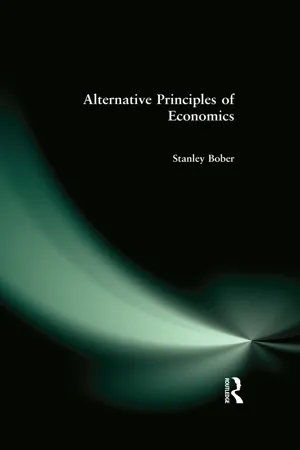Economics
Consumer Preferences
Consumer preferences refer to the specific tastes and desires of individuals when making consumption choices. These preferences are influenced by factors such as price, quality, and personal inclinations. Understanding consumer preferences is crucial for businesses and policymakers in determining product offerings, pricing strategies, and market demand.
Written by Perlego with AI-assistance
Related key terms
Related key terms
1 of 4
Related key terms
1 of 3
5 Key excerpts on "Consumer Preferences"
- eBook - ePub
- Andrew Barkley, Paul W. Barkley(Authors)
- 2016(Publication Date)
- Routledge(Publisher)
There is no actual proof of this; it is just intuition that appears to be so widespread that it is called a “law.” This law is powerful enough to explain a great deal about the way consumers behave. The law of diminishing marginal utility implies that consumers will not spend all of their income on one good, because the marginal utility of continuing to buy more of the same good declines. Instead, consumers use their money to buy a variety of goods.7.4 Indifference curves
Understanding consumer behavior requires considering the properties of Consumer Preferences. As in earlier cases, understanding consumer behavior requires several assumptions. The assumptions simplify the real world to provide greater understanding of consumer choices. The major assumptions associated with the study of consumer behavior include:- Assumption #1: Preferences for goods and services are complete.
When given any two goods, a consumer can determine if he or she prefers A to B, B to A, or is indifferent between A and B. Let the symbol > mean “is preferred to,” and the symbol < mean “is less preferred to,” and the symbol ~ mean “is indifferent to.” Completeness of preferences requires that for any two goods, A and B, the consumer can tell if:(7.1.a) A > B (A is preferred to B),(7.1.b) B > A (B is preferred to A), or(7.1.c) A ~ B (the consumer is indifferent between A and B).Complete preferences allow economists to study all goods, since the consumer is able to rank how any good compares to all other goods in the generation of utility.- Assumption #2: Consumers are consistent.
(7.2) If A > B and B > C, then A > C.“Transitive preferences,” or simply “transitivity,” means that consumers do not change their preferences haphazardly. Economists assume that consumer behavior is purposeful and consistent, so purchases must be consistent. This can be a difficult assumption in the real world since the transitivity among a few goods, or the entire universe of goods, applies only in one place, time, and context.Consumer behavior is complicated, and known to be quite changeable. A quick look at selecting which political candidate to support helps make this point. One voter may choose the Democrat candidate until the Republican candidate makes a series of promises that are attractive to the voter. Two problems arise. First, if one candidate makes new promises, is the voter still comparing the same two goods? Second, the transitivity requirement must hold for only a brief moment. The result of these problems places boundaries around the notion of indifference. Nonetheless, it is an important attribute needed for the study of Consumer Preferences to move ahead. - eBook - ePub
Economics for Investment Decision Makers
Micro, Macro, and International Economics
- Christopher D. Piros, Jerald E. Pinto(Authors)
- 2013(Publication Date)
- Wiley(Publisher)
In effect, consumer choice theory first models what the consumer would like to consume, and then it examines what the consumer can consume with limited income. Finally, by superimposing what the consumer would like to do onto what the consumer can do, we arrive at a model of what the consumer would do under various circumstances. Then by changing prices and income, the model develops consumer demand as a logical extension of consumer choice theory. Although consumer choice theory attempts to model consumers’ preferences or tastes, it does not have much to say about why consumers have the tastes and preferences they have. It still makes assumptions, but does so at a more fundamental level. Instead of assuming the existence of a demand curve, it derives a demand curve as an implication of assumptions about preferences. Note that economists are not attempting to predict the behavior of any single consumer in any given circumstance. Instead, they are attempting to build a consistent model of aggregate market behavior in the form of a market demand curve. Once we model the consumer’s preferences, we then recognize that consumption is governed not only by preferences but also by the consumer’s budget constraint (the ability to purchase various combinations of goods and services, given the consumer’s income). Putting preference theory together with the budget constraint gives us the demand curve we are seeking. In the following sections, we explore these topics in turn. 3. UTILITY THEORY: MODELING PREFERENCES AND TASTES At the foundation of consumer behavior theory is the assumption that the consumer knows his or her own tastes and preferences and tends to take rational actions that result in a more preferred consumption bundle over a less preferred bundle. To build a consistent model of consumer choice, we need to begin with a few assumptions about preferences. 3.1 - eBook - ePub
- Tassos Patokos(Author)
- 2013(Publication Date)
- Routledge(Publisher)
2 Individual behaviour2.1 Preferences and utilityIndividual choice theory is the foundation of mainstream economic theory. It is about how rational people make choices, and it extends well beyond consumers and markets, as it offers a framework that may be used to analyse the behaviour of any rational individual, whatever his or her possible alternative choices: it is not only about decisions on what quantities of goods to buy from the market at given prices and level of income (as might be the impression after reading a micro-economics textbook), but it also covers all kinds of possible decisions, and applies to any scenario where the individual has to choose from a set of alternatives. Because of this, it could be said that it is a remarkably ambitious theoretical programme, which essentially provides us with a general theory on human behaviour. Now, given that individuals commonly indulge in all sorts of behaviours, it is hardly surprising that the theory exclusively restricts its attention to a special class of individuals: the rational ones. This seems a necessary limitation, if we want the theory to have anything meaningful to say at all.The obvious first step for any theory seeking to analyse the behaviour of a rational individual is to give a precise definition of rationality. Economic theory, indeed, offers us not just one, but two such definitions. The most renowned one focuses on the preferences of the rational individual, while the second definition relies on the individual's actual choices. It will be instructive to delve into both of them, because, for one thing, they are linked with each other, and secondly, because there is much to be said about the fact that the preference-based definition of rationality is most common, while the choice-based approach is not used very often.The definition of rationality that uses preferences requires that the rational individual's preferences have two properties: completeness and transitivity - eBook - ePub
- Christian Schubert, Georg Von Wangenheim(Authors)
- 2006(Publication Date)
- Routledge(Publisher)
Yet economics traditionally assumes that preferences are constant. This “unrealistic” assumption allowed economists to make great progress in explaining human behavior and in deducing relevant policy consequences. Taking preferences to be immutable focuses the analysis on the effect of (generalized) relative price changes (or changes in the opportunity set) on behavior. This approach has been most clearly visible in the work by Gary Becker (1962, 1976). To the surprise, and also the dismay, of many social scientists (including some economists), he demonstrated that the approach holding preferences constant provides valuable insights not only in the area of the economy, but far beyond. This success led to the claim of economics being the “Queen of the Social Sciences” (most prominently Stigler 1984, Lazear 2000).At the same time, there were always economists who wanted to deal with changing preferences. There is a long intellectual history of attempts to explain changes in human preferences. But this approach has met with little success. Changing preferences play a minor role in economics. While quite a number of such efforts were undertaken in the 1970s and 1980s,2 today there are but a few publications addressing this issue, at least in the leading journals. Economics, as revealed in advanced level textbooks, has essentially disregarded these attempts.A different, and more successful, route explains changes in tastes by assuming the utility function to be time invariant and equal between individuals, but that individuals accumulate human capital based on their past experiences (Stigler and Becker 1977, Becker 1996). A particular consumption bundle leads to a different evaluation by individuals, depending on the amounts of such human capital accumulated. Most people would consider such a process to be a change in preference. This avenue produced noteworthy and empirically testable insights into human behavior (e.g., Becker and Murphy 1988 on addiction). It also yielded important policy results, for instance that drug addicts can only get rid of their dependence if they decide to abstain abruptly and completely (“cold turkey”). The approach, however, found relatively few followers, perhaps because such redefinition in terms of a change in human capital is considered to be somewhat artificial. - eBook - ePub
- Stanley Bober(Author)
- 2016(Publication Date)
- Routledge(Publisher)
In a very real way consumers are always discovering their preferences via a leaving process, as a result of observation and imitation. Preferences are not innate; they are the result of learned social behavior and are not given or ordered by some natural law. As Pasinetti says, “Thus consumers’ demands become dependent less and less on their instincts and more and more on their knowledge. This means that each consumer is increasingly bound to carry out a preliminary process of discovering his preferences before he (or she) can express them.” 24 The reality that preferences are mainly driven by external social factors rather than by some internal rational mechanism will give rise to rapid demand shifts, and all the more so in response to changes in income. In Figure 4.18 we employ an Engel curve to illustrate the expenditures on goods that rapidly “fall away” as real income increases. All that we have been saying gives us a way to highlight the difference between our approach and that of traditional consumer analysis both from a basis of a “change in the amount demanded” and a “change in demand”—to use the standard Principles vernacular. The former, of course, imbues the student with the idea that the essential element of consumer behavior is that of price substitutability (the degree of which is reflected in the elasticity calculation). And that as long as prices are positive (we can think of a linear demand curve along which we read prices that are declining from some high level) there will be a corresponding amount demanded. Expenditures would approach a zero level—consumers reach a point of satiation—when the price level approaches zero
Index pages curate the most relevant extracts from our library of academic textbooks. They’ve been created using an in-house natural language model (NLM), each adding context and meaning to key research topics.
Explore more topic indexes
Explore more topic indexes
1 of 6
Explore more topic indexes
1 of 4




